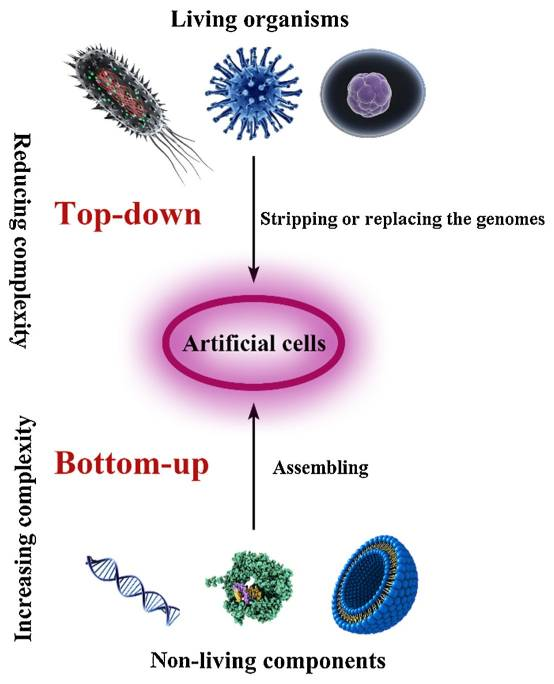Important Facts For Prelims
DNA Nano Rafts
- 17 Feb 2025
- 4 min read
Why in News?
A study published in Nature Materials has introduced a revolutionary technique using DNA Nanorafts to create Artificial Cells that can work like biological membranes.
- These programmable nanostructures can reshape membranes, form pathways, and react to surroundings, advancing medicine, biosensors, and artificial life research.
What is DNA Nanorafts?
- DNA Nanorafts: DNA (Deoxyribonucleic Acid) nano-rafts are tiny, flat structures made from DNA strands which can be programmed to control the shape and permeability of cell membranes in response to specific chemical signals.
- This ability allows them to influence cell-like membranes in a controlled way.
- Working Mechanism:
- Attachment to Model Membranes: DNA nanorafts attach to Giant Unilamellar Vesicles (GUVs), which serve as simplified models of biological cell membranes.
- GUVs are artificial, cell-sized lipid membranes that mimic real cell membranes, making them useful for studying membrane behavior and transport mechanisms in synthetic biology.
- Shape Modification & Reversibility: DNA nanorafts expand when "unlocking" DNA strands are added, altering the membrane’s shape.
- This unlocking can be triggered by enzymes, mechanical devices, or other methods. The process is reversed by adding "locking" DNA strands, restoring the original shape.
- Locked Nucleic Acid (LNA) helps secure DNA strands together for stability.
- Controlled Membrane Manipulation: This technique allows scientists to precisely control artificial cell membranes.
- Attachment to Model Membranes: DNA nanorafts attach to Giant Unilamellar Vesicles (GUVs), which serve as simplified models of biological cell membranes.
- Key Functions:
- Cell Shaping: Nanorafts can alter the structure of synthetic cell membranes, which is essential for cell movement, division, and communication.
- Gatekeeping (Molecular Transport): They create temporary channels in the membrane, allowing molecules to pass through.
- These channels can open and close as needed, similar to natural protein-based channels in living cells.
What is an Artificial Cell?
- About: Artificial cells are synthetic structures that mimic living cells but are made from non-living components like synthetic membranes and chemicals.
- Creation: Synthetic cells can be created using 2 main approaches:
- Top-down approach: Scientists start with a living cell, remove non-essential genes, and retain only core functions. Eg: Mycoplasma mycoides JCVI-syn3.0 (minimal synthetic cell).
- Bottom-up approach: Researchers build a cell-like structure from the ground up by combining biological and non-biological molecules to replicate key cellular functions. Eg: GUVs
- Applications:
- Drug Delivery: Synthetic cells can be designed to transport and release medicines at specific targets in the body.
- Biomedicine: They can aid in developing innovative therapies for chronic diseases such as cancer.
- Organ Transplantation: It could help in creating bioengineered tissues or organs, addressing the shortage of donor organs.
UPSC Civil Services Examination Previous Year Question
Q. Consider the following statements:
- Genetic changes can be introduced in the cells that produce eggs or sperms of a prospective parent.
- A person’s genome can be edited before birth at the early embryonic stage.
- Human induced pluripotent stem cells can be injected into the embryo of a pig.
Which of the statements given above is/are correct?
(a) 1 only
(b) 2 and 3 only
(c) 2 only
(d) 1, 2 and 3
Ans: (d)





